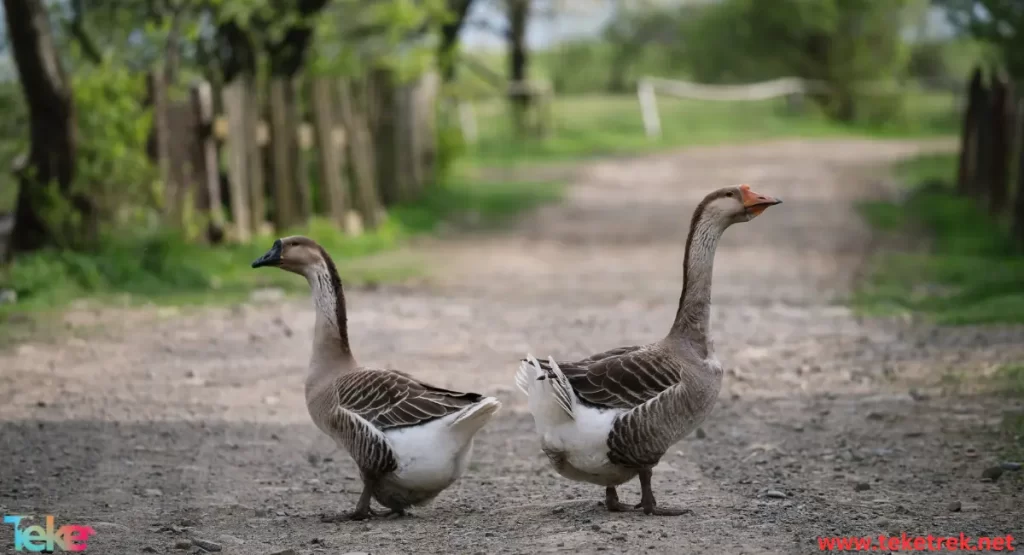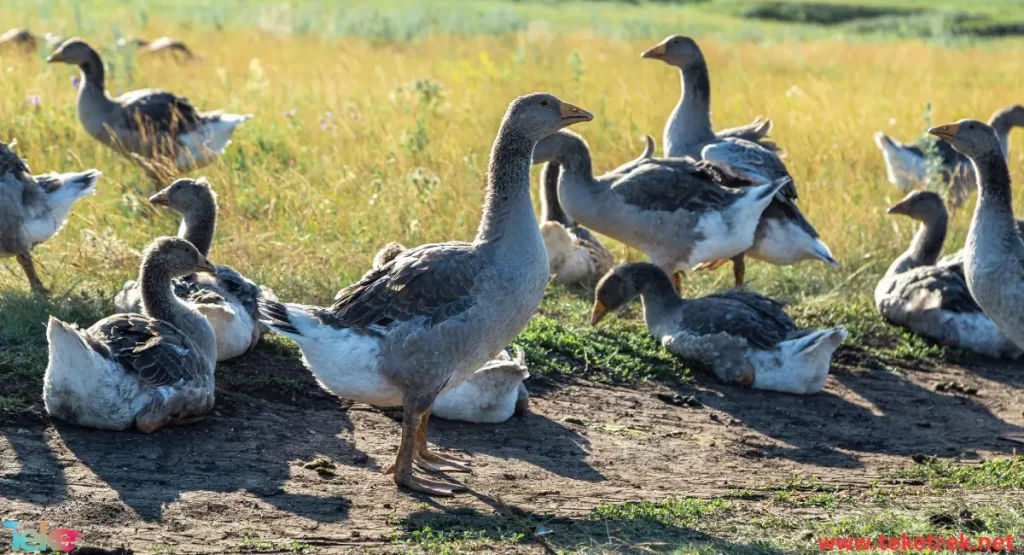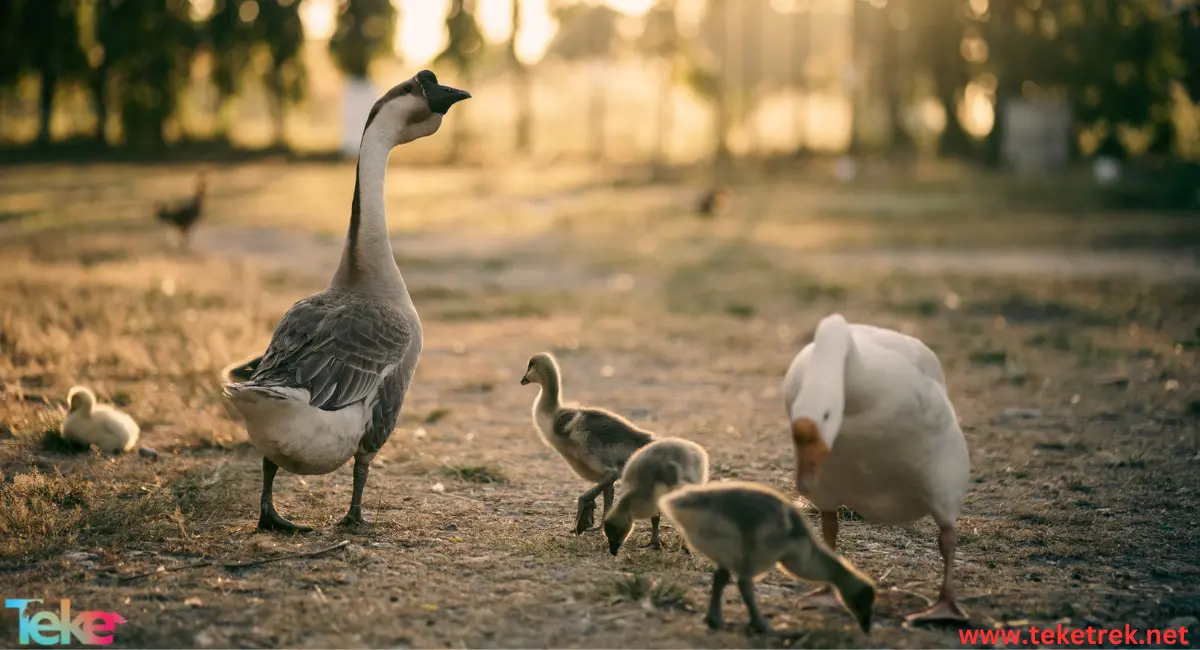The Nene geese are considered aquatic birds that live on the island of Hawaii, so they were also named after them. They also have another name, which is the sand geese.
Nin geese are considered endangered animals, so the government adopted them, protected them, and provided them with the appropriate environment and ideal conditions.
Protecting this wonderful and beautiful species of geese requires the cohesion and concerted efforts of governments and environmental organizations with the aim of increasing their numbers and ensuring their survival in the lap of nature, thus contributing to preserving the biological diversity of the organisms that live on our planet.
If you are a fan of wildlife and waterbirds in particular, follow this article from teketrek and learn the most important amazing facts about this beautiful bird. Take just a few minutes to read this article and benefit from the information contained in it.

important information available about Nene geese
The nun geese is considered one of the endemic birds on the island of Hawaii. The nun geese was found for the first time in the wild on the islands of Oahu, Maui, Kauai, Molokai, and Hawaii as well, so in 1957 it was classified as the official bird of the state of Hawaii.
Nun geese belong to the phylum Chordata, the phylum of vertebrates, of the class Birds.
Scientists believe that the origin of these geese goes back to the Canadian geese, which migrated thousands of years ago and arrived in the Hawaiian Islands, and then adapted to their new environment, whether in terms of food or external appearance. Prospectors and historical scholars found that the ancient geese were four times larger than the current ones. almost.
Geese live in shrubs, grasslands and coastal dunes, as well as lava plains and human-owned grasslands such as golf courses and pastures.
Some groups migrated between the breeding areas in the coastal lowlands and some mountainous areas, where you can see this beautiful bird at an altitude of 2400 meters above sea level.
Geese sleep on the ground with their feet tucked under them. They are diurnal birds that perform all their tasks during the day. As soon as night comes, they sleep and rest, taking into account their place and protecting themselves from all intruders. These birds can be found in groups exceeding 30 birds.
The dominant male defends the group and his territory as well. The geese also swim in ponds and swamps. The swimming process is accompanied by their applying oil to the geese’s feathers with their beak, extracted from the sebaceous glands located in the geese’s back. The goal of this process is to prevent water from leaking into its body.
What are the characteristics of Nen geese?
Nun geese are large birds with a height of about 41 cm. They spend most of their time on the ground, but they can fly and fly certain distances. Sometimes the goose flies between the nesting and feeding areas.
The weight of male geese is about 1.6-3.06 kg, while the female weighs 1.5-2.56 kg, meaning that the male is 11% larger than the female.
In addition to its weight, male Nun geese are characterized by black color on the head and back of the neck, orange cheeks, and a greatly wrinkled neck.
The neck of Nun geese contains diagonal stripes colored in white and black, and they are present in both males and females, as they both resemble each other in color.
The adult male of the Nun geese is characterized by black feet and soft feathers under the chin, while young adult geese resemble each other with small differences in the distribution of colors between the head and neck, but these differences quickly disappear with age.
What is the favorite food of geese?
These birds are herbivores , as their diet includes more than 30 types of local and introduced herbs and plants, as they graze on the seeds and leaves of trees, flower leaves, and some different fruits that live in the original environment of these birds.
Stages of reproduction in geese
The breeding season for geese begins in October and ends in March, when the male gets to know the female and they remain together for life.
The nest is built on the ground using a variety of twigs, leaves, dry and green grasses in the shape of a bowl, and the inside is lined with soft down.
The parents also camouflage it to protect it from all dangers and threats that could harm the eggs and chicks.
Female geese lay 2-5 eggs, and there may be more than one nest if the first one is abandoned due to destruction.
The female incubates the eggs and takes care of them, while the male guards the nest. Incubation lasts about 30 days.
Both parents take care of the chicks. You will notice the growth of feathers 10-12 weeks after hatching, and they do not begin flying until at least 4-6 weeks have passed, as you will notice the growth of flight feathers when they reach puberty and prepare for life in the wild.
The reason for the decline in the number of geese
The reason for the decline in the number of geese in their original habitat is the destruction of the geese’s original habitat by humans first, and through some animals introduced to the ecosystem in that area, such as dogs, cats, mongooses, rats, and pigs.
These animals prey on young geese and destroy their nests, etc., and thus this will lead to a significant decrease in their numbers.
In addition, goats, sheep and cattle affect the numbers of geese through grazing, which reduces the feeding resources to raise more geese, and thus will reflect negatively on their numbers.

FAQs about Nene geese
Can geese be tamed?
Yes, you can tame it, as it was used in some cultures as a pet bird. A person can benefit from it from meat or eggs once the appropriate conditions are provided for him.
What is the life span of geese?
Geese live for about 20 years in the wild, but some can live a longer period of time if suitable conditions are provided for them in captivity.
How do Nin geese reproduce?
Nin geese reproduce through eggs, where both the male and female build the nest and care for the eggs until they hatch.
Then the parents take care of the chicks and protect them from all enemies until they reach adulthood.
Does the nun goose have any other names?
Yes, they have the name Hawaiian geese, and this is due to the Hawaiian islands in which they live and are settled.
Can a goose’s condition be distinguished by its sound?
Yes, you can, as an adult bird makes meowing or bellowing sounds in normal situations, but it can become chattering and loud noises when disturbed.
At the end of our article about the Nene Geese, it is worth mentioning that it is our duty to protect this bird from extinction and secure everything necessary for its continued existence.





